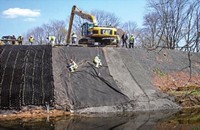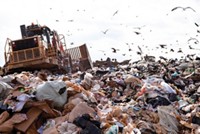Advertisement
Grab your lab coat. Let's get started
Welcome!
Welcome!
Create an account below to get 6 C&EN articles per month, receive newsletters and more - all free.
It seems this is your first time logging in online. Please enter the following information to continue.
As an ACS member you automatically get access to this site. All we need is few more details to create your reading experience.
Not you? Sign in with a different account.
Not you? Sign in with a different account.
ERROR 1
ERROR 1
ERROR 2
ERROR 2
ERROR 2
ERROR 2
ERROR 2
Password and Confirm password must match.
If you have an ACS member number, please enter it here so we can link this account to your membership. (optional)
ERROR 2
ACS values your privacy. By submitting your information, you are gaining access to C&EN and subscribing to our weekly newsletter. We use the information you provide to make your reading experience better, and we will never sell your data to third party members.
Environment
Regulation On Coal Waste Disposal Could Save Wildlife
Environmental Policy: A current disposal method has caused billions of dollars in damage to U.S. wildlife, new study says
by Melissae Fellet
August 8, 2012

At some coal-fired power plants, workers store coal ash, the residue left over from burning coal, as a slurry in reservoirs. New calculations by environmental scientists estimate that, over the past 45 years, contaminants leaching from these waste reservoirs have caused $2.3 billion in damage to fish and other wildlife living nearby (Environ. Sci. Technol., DOI: 10.1021/es301467q). These estimates show that the benefits far outweigh the costs of a recently proposed coal waste disposal regulation, the researchers say.
The coal ash reservoirs are called surface impoundments. Runoff from impoundments carries contaminants, such as selenium and arsenic, into groundwater and nearby habitats. The Environmental Protection Agency is considering a regulation that might eliminate the disposal method. Instead, plants would dump coal ash in lined landfills and would have to treat water leaching out. Another disposal option would require surface impoundments to have protective liners to prevent tainted water from escaping into the ground.
EPA has calculated the economic benefits of this proposed regulation by estimating costs to the environment and human health that the regulation would eliminate by requiring safer storage methods. These include the costs of cleaning polluted groundwater, repairing impoundment dam breaks, and treating cancers caused by arsenic exposure.
But EPA’s analysis does not consider wildlife poisoned by coal ash pollution, say A. Dennis Lemly, of the Forest Service, and Joseph Skorupa, of the Fish & Wildlife Service. The two scientists wanted to put a dollar value on poisoned wildlife.
To do so, the researchers identified 21 habitats near 21 impoundments in 13 states with documented wildlife poisonings from surface impoundments over the past 45 years. For each area, they looked at costs including costs to restock lakes with fish and lost real estate value due to pollution. In total, the damage caused by the surface impoundments added up to more than $2.3 billion. Over the next 50 years, these 21 sites could cause $3.85 billion in additional damage. That’s enough money to build 257 safer, state-of-the-art landfills, which could hold all the ash contained in the nation’s impoundments, the researchers say.
EPA’s analysis already had concluded that the benefits of eliminating surface impoundments would outweigh the costs of building these new landfills. Adding these new numbers to those EPA estimates, Lemly says, more than doubles the value of the benefits from the regulations. He also points out that his and Skorupa’s calculations likely underestimate the true costs to wildlife because they contain conservative assumptions, such as low estimates of affected fish populations, and because they include information from fewer than 5% of the country’s surface impoundments.
Coal ash pollution creates real risk for wildlife that should be quantified further, says Abel Russ, an attorney with the Environmental Integrity Project, an environmental research and advocacy organization. The EPA calculations underestimate the regulation’s savings to human health by not including some non-cancer-causing health effects of impoundments, he adds. Adding the new environmental figures further tips the balance in favor of regulation, he says.




Join the conversation
Contact the reporter
Submit a Letter to the Editor for publication
Engage with us on Twitter